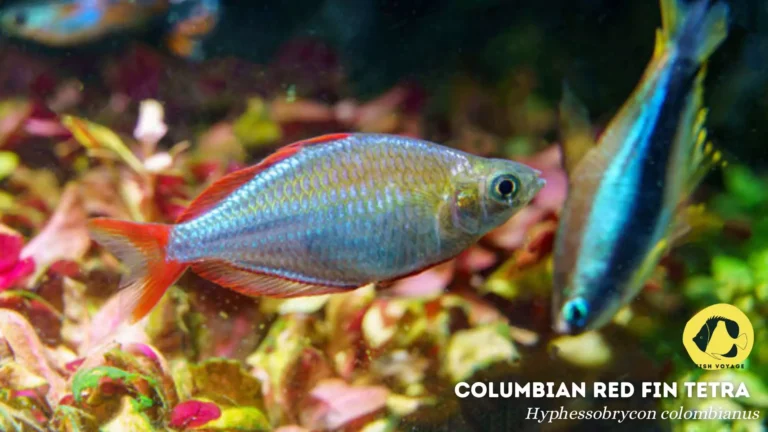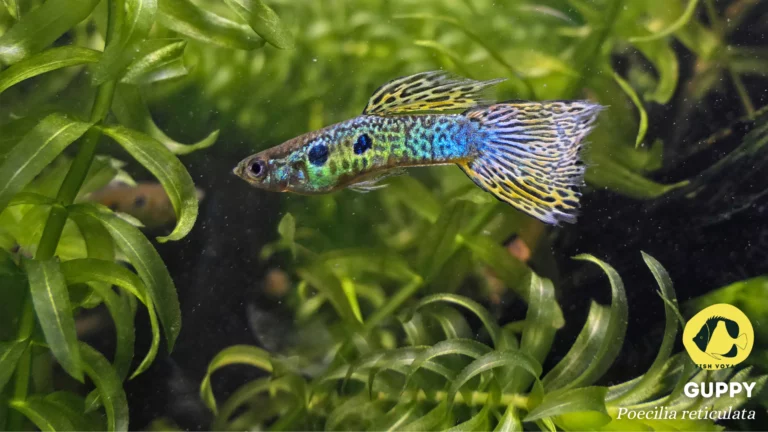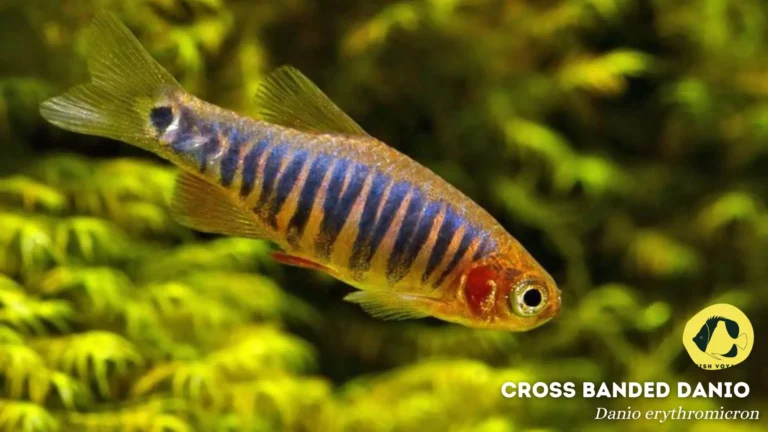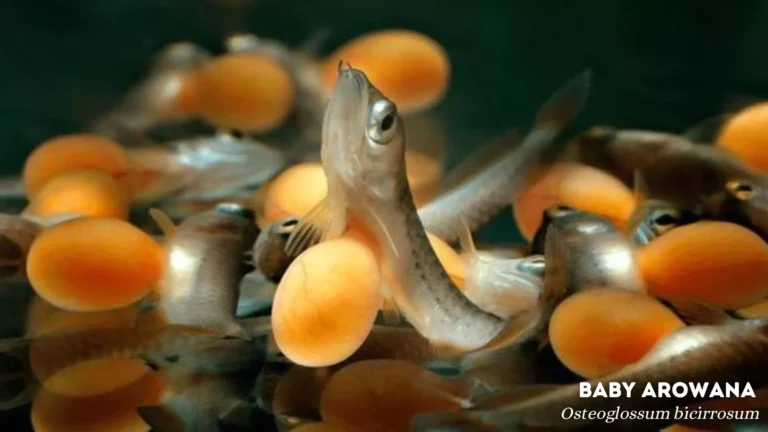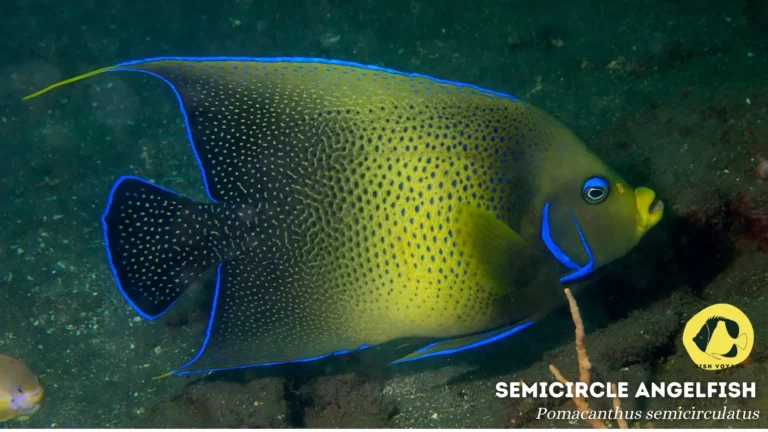The Ultimate Guide to Brevibora Dorsiocellata Tank Mates
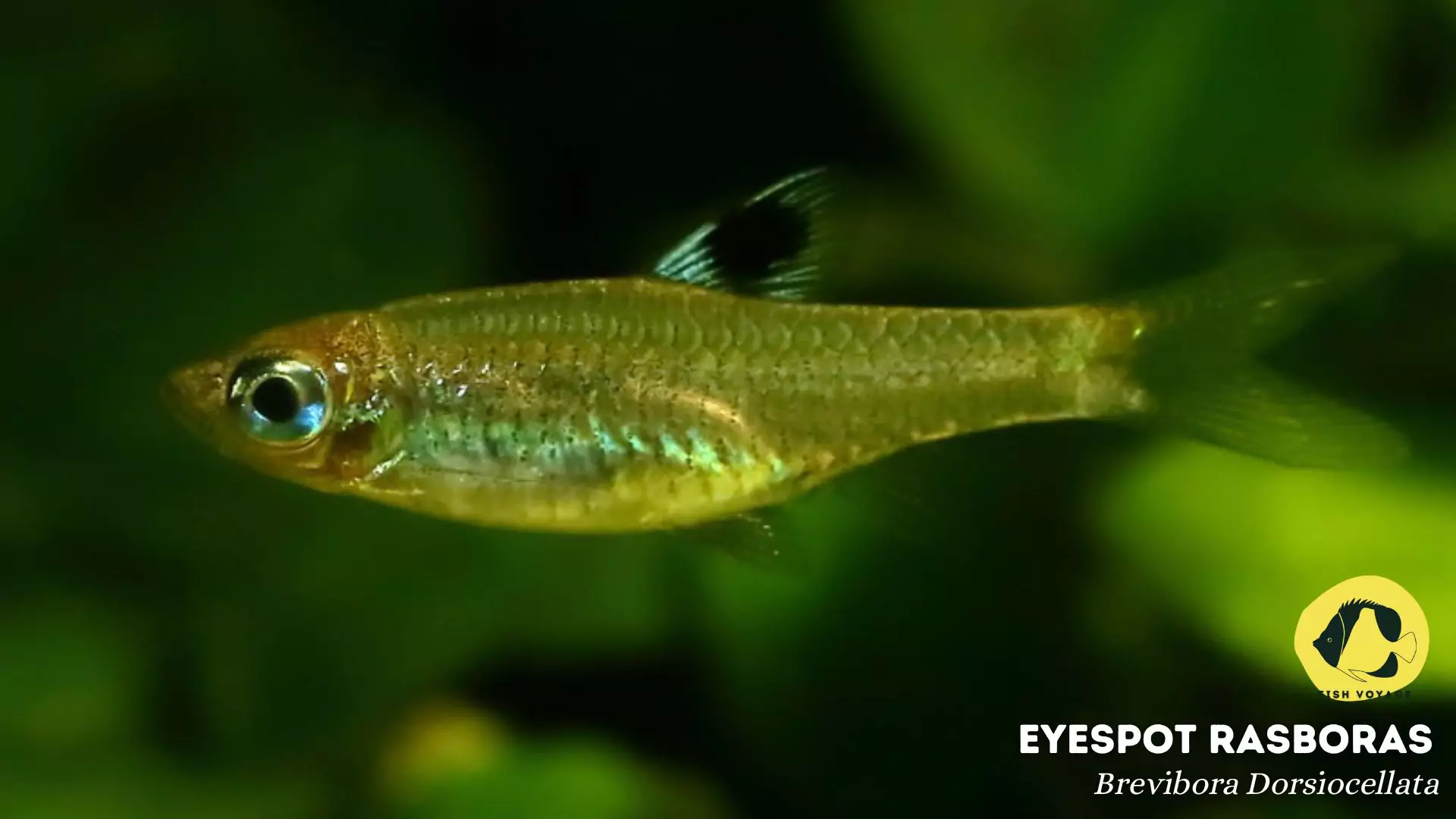
In the captivating world of aquarium enthusiasts, the Brevibora Dorsiocellata, commonly known as the Eyespot Rasbora, stands out as a gem of the aquatic realm. With its vibrant colors and charming demeanor, this diminutive species has become a favorite among hobbyists seeking to add a touch of elegance to their aquatic landscapes. Characterized by its emerald-green hues and petite size, the Eyespot Rasbora thrives in community settings, creating a visually enchanting spectacle.
However, the key to a flourishing aquarium lies not only in the aesthetic appeal of individual species but also in the delicate balance achieved through thoughtful tank mate selection. As we delve into the world of Brevibora Dorsiocellata tank mates, we embark on a journey to discover the significance of choosing compatible companions for these charming aquatic gems, fostering a harmonious and thriving underwater habitat for both enthusiasts and their aquatic companions.
Characteristics of Brevibora Dorsiocellata
Size
The Eyespot Rasbora, Brevibora Dorsiocellata, boasts a petite size, typically reaching about 0.8 to 1.2 inches (2-3 cm) in length. This compact stature makes them an ideal choice for smaller aquarium setups and community tanks.
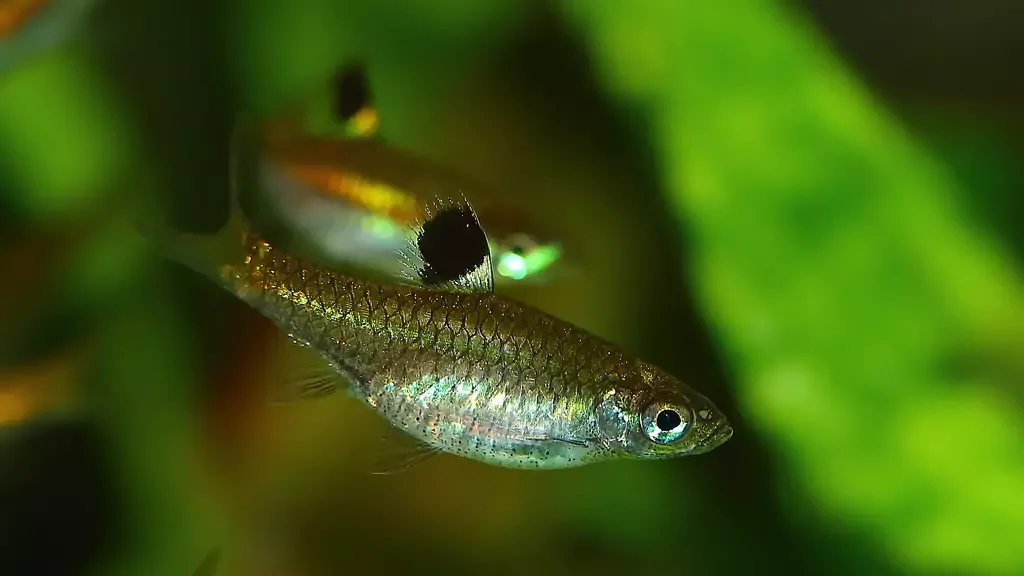
Behavior
Renowned for their peaceful demeanor, these rasboras exhibit a calm and non-aggressive behavior. Their tranquil nature makes them well-suited for community aquariums, allowing for a serene coexistence with other compatible species.
Preferred Water Conditions
Brevibora Dorsiocellata thrives in freshwater environments with stable water parameters. Aim for a temperature range of 73-82°F (23-28°C) and a slightly acidic to neutral pH level of 6.0-7.0. Maintaining pristine water quality is paramount for their overall health and vitality.
Schooling Nature
One of the distinctive features of Eyespot Rasboras is their inherent schooling behavior. These fish feel most secure and comfortable when kept in groups of five or more. The presence of a cohesive school not only enhances their well-being but also creates a visually captivating spectacle in the aquarium.
Unique Traits
Sporting an enchanting emerald-green coloration, Brevibora Dorsiocellata adds a vibrant touch to any aquarium. Their small, streamlined bodies and distinctive black markings near the caudal peduncle contribute to their aesthetic appeal. Observing their graceful movements within a school is a unique and delightful experience for aquarists.
Incorporating the Eyespot Rasbora into your aquatic haven requires an understanding of these key characteristics. By appreciating their size, behavior, preferred water conditions, schooling nature, and unique traits, aquarists can create an environment that ensures the well-being and visual allure of these charming aquatic companions.
Ideal Tank Setup
Recommended Tank Size
For optimal comfort and well-being, provide a tank with a minimum size of 10 gallons (38 liters) for a small group of Eyespot Rasbora. Larger tanks, such as 20 gallons or more, accommodate a more extensive school, allowing these charming fish to thrive and display their natural behaviors.
Water Parameters
Maintain stable water conditions to ensure the health of Brevibora Dorsiocellata. Keep the temperature within the range of 73-82°F (23-28°C) and maintain a slightly acidic to neutral pH level between 6.0-7.0. Soft to moderately hard water with a dGH of 5-12 enhances their overall well-being.
Plants for Enrichment
Integrate live plants into the aquarium environment to mimic the natural habitat of Eyespot Rasbora. Plants, such as Java Moss, provide hiding spots and refuge for these small fish. Additionally, live plants contribute to water quality by absorbing nitrates and providing a source of natural filtration.
Hiding Spots
Create a well-structured environment with plenty of hiding spots and visual barriers. Driftwood, caves, and decorations allow Brevibora Dorsiocellata to retreat when needed, reducing stress and promoting a sense of security. Ensuring ample hiding places is particularly crucial when introducing new tank mates.
Appropriate Substrate
Opt for a substrate that replicates the Rasboras’ natural habitat. Fine gravel or sand works well, allowing them to sift through the substrate in search of food. A dark substrate enhances the vibrancy of their colors and creates a visually appealing contrast in the aquarium.
Crafting an ideal tank setup for Brevibora Dorsiocellata involves meticulous attention to their specific needs. By adhering to the recommended tank size, maintaining suitable water parameters, incorporating live plants, providing hiding spots, and selecting an appropriate substrate, aquarists can create a thriving and visually stunning environment for these captivating aquatic companions.
Compatibility Factors
Temperament of Eyespot Rasbora
Brevibora Dorsiocellata exhibits a gentle and peaceful temperament, making them an excellent choice for community aquariums. Their calm nature contributes to a harmonious aquatic environment, and they thrive when surrounded by equally tranquil tank mates.
Need for Peaceful Tank Mates
Emphasizing the importance of selecting peaceful companions is paramount for the well-being of Eyespot Rasboras. Aggressive or territorial species may induce stress in Brevibora Dorsiocellata, leading to potential health issues and disrupting their schooling behavior.
Preventing Stress
Stress can compromise the immune system of these small fish. To mitigate stress, opt for tank mates that share a similar temperament and are unlikely to engage in aggressive behaviors. Peaceful community fish, such as other rasboras, tetras, and certain catfish species, make ideal companions for Brevibora Dorsiocellata.
Observing Interactions
Regularly observe the interactions between Brevibora Dorsiocellata and their tank mates. Monitoring their behavior allows aquarists to identify any signs of stress or aggression. In the event of any issues, adjustments to the tank’s inhabitants may be necessary to maintain a calm and cohesive community.
Consideration for Breeding Behavior
While generally peaceful, Eyespot Rasbora may display increased territoriality during the breeding season. Adequate hiding spots and a well-structured environment help alleviate potential conflicts and allow for successful reproduction without undue stress.
Striking a balance in the aquarium community involves careful consideration of the temperament of Brevibora Dorsiocellata. By prioritizing peaceful tank mates, observing interactions, and creating an environment that minimizes stress, aquarists can ensure a thriving and content community of aquatic inhabitants.
Top 5 Suitable Tank Mates
Harlequin Rasbora (Trigonostigma heteromorpha)
- Size: Similar in size to Brevibora Dorsiocellata, Harlequin Rasboras add a burst of color to the aquarium.
- Behavior: Peaceful and sociable, Harlequins share a compatible temperament, forming a captivating school with Eyespot Rasboras.
- Water Requirements: Both species prefer slightly acidic to neutral pH levels and soft to moderately hard water.

Neon Tetra (Paracheirodon innesi)
- Size: Comparable in size, Neon Tetras create a visually stunning contrast with Brevibora Dorsiocellata.
- Behavior: Non-aggressive and known for their vibrant colors, Neon Tetras harmonize well in a community tank.
- Water Requirements: Both species thrive in slightly acidic water with a pH range of 6.0-7.0.

Corydoras Catfish (Corydoras spp.)
- Size: Corydoras species, such as the Corydoras habrosus, are compatible in size and complement the bottom-dwelling nature of Eyespot Rasboras.
- Behavior: Peaceful and social, Corydoras catfish are excellent scavengers, helping to maintain a clean tank.
- Water Requirements: They share preferences for soft to moderately hard water and slightly acidic pH levels.

Cherry Shrimp (Neocaridina davidi)
- Size: Dwarf shrimp, like Cherry Shrimp, are small and coexist peacefully with Brevibora Dorsiocellata.
- Behavior: These invertebrates add activity to the lower regions of the tank, and their vibrant coloration enhances the overall aesthetic.
- Water Requirements: Cherry Shrimp thrive in the same water parameters preferred by Eyespot Rasboras.

Guppies (Poecilia reticulata)
- Size: Guppies, available in various colors, are compatible in size and add diversity to the aquarium.
- Behavior: Generally peaceful, guppies are active swimmers and cohabit well with the schooling nature of Eyespot Rasboras.
- Water Requirements: Both species can thrive in similar freshwater conditions, making them compatible tank mates.
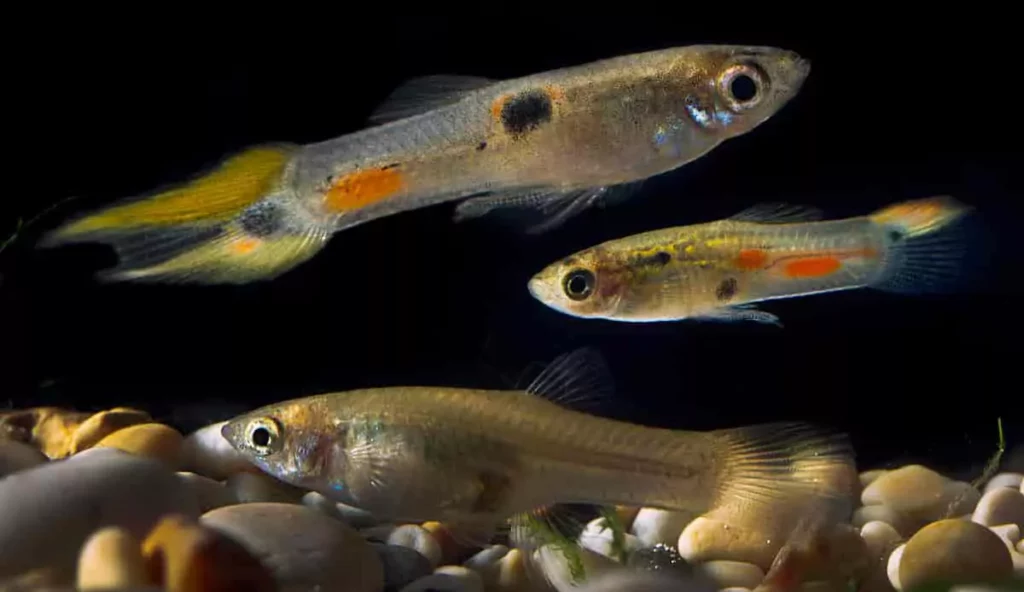
Selecting suitable tank mates for Brevibora Dorsiocellata involves considering factors like size, behavior, and water requirements. By introducing companions such as Harlequin Rasboras, Neon Tetras, Corydoras Catfish, Cherry Shrimp, and Guppies, aquarists can create a vibrant and harmonious community, enhancing the overall appeal of the aquarium.
Top 5 Incompatible Tank Mates
Aggressive Betta Fish (Betta splendens)
- Aggression: Betta fish are known for their territorial and aggressive nature, especially towards fish with similar colors or fin shapes.
- Size Difference: Betta fish may have a size advantage, potentially leading to bullying and stress for the smaller Eyespot Rasboras.
- Environmental Needs: Bettas prefer slower-moving waters, while Brevibora Dorsiocellata thrives in well-aerated environments with moderate water flow.
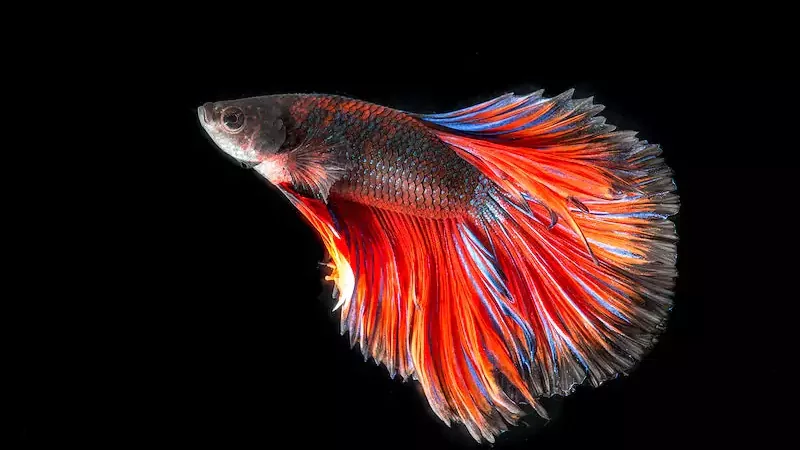
Cichlids (Various Species)
- Aggression: Many cichlid species exhibit territorial aggression, which can result in conflicts with the peaceful nature of Eyespot Rasboras.
- Size Difference: Cichlids often grow larger than Brevibora Dorsiocellata, posing a risk of predation or intimidation.
- Environmental Needs: Cichlids may require different water parameters, including higher pH levels, compared to the preferences of Eyespot Rasboras.
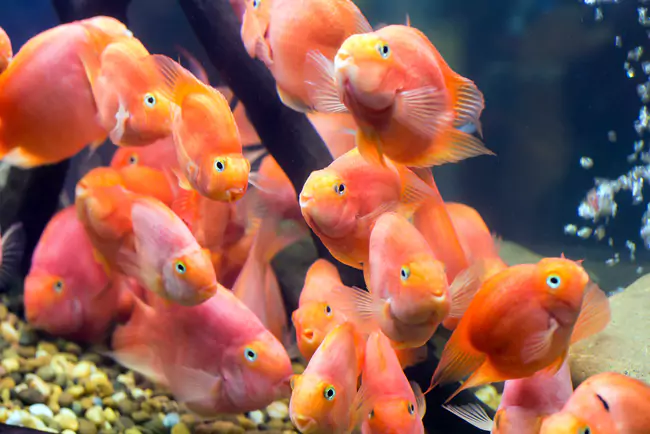
Red-Tailed Shark (Epalzeorhynchos bicolor)
- Aggression: Red-tailed sharks are known to be territorial and can become aggressive, especially in confined spaces.
- Size Difference: The larger size of red-tailed sharks poses a potential threat to the smaller Eyespot Rasboras.
- Environmental Needs: Red-tailed sharks prefer well-oxygenated water, but their territorial behavior may conflict with the schooling nature of Brevibora Dorsiocellata.
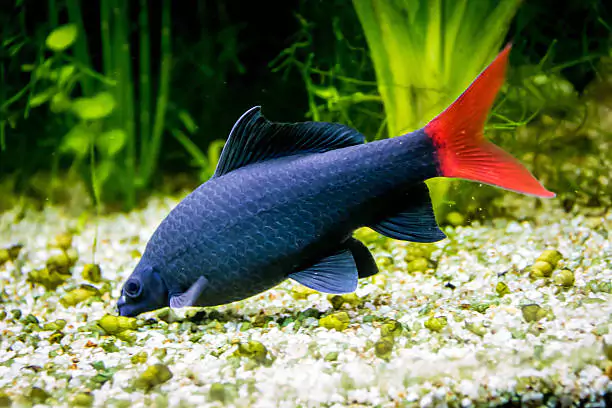
Goldfish (Carassius auratus)
- Aggression: Despite their popularity, goldfish can exhibit aggressive behaviors, particularly during feeding times.
- Size Difference: Goldfish can grow significantly larger than Eyespot Rasboras, leading to size-related conflicts.
- Environmental Needs: Goldfish are cold-water species, and their different temperature requirements can be incompatible with the tropical conditions preferred by Brevibora Dorsiocellata.
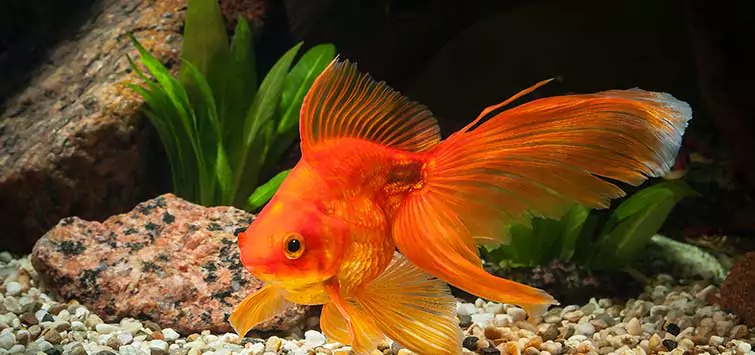
African Cichlids (Various Species)
- Aggression: African cichlids are known for their territorial and sometimes aggressive behaviors, creating an unsuitable environment for peaceful rasboras.
- Size Difference: The size disparity between African cichlids and Eyespot Rasboras can result in intimidation and stress for the smaller fish.
- Environmental Needs: African cichlids often require specific water parameters, including higher pH levels and harder water, which may not align with the preferences of Brevibora Dorsiocellata.
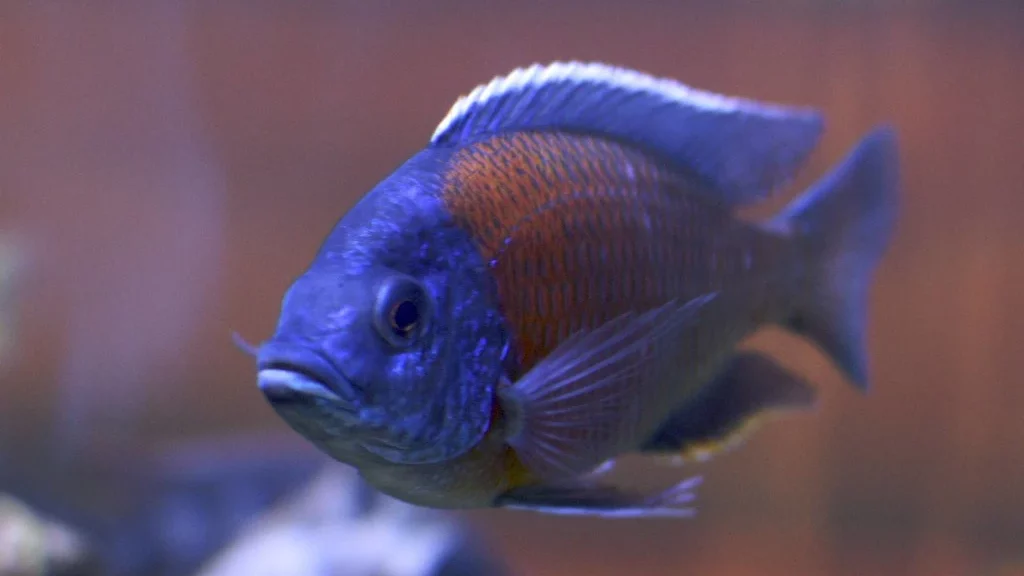
Choosing compatible tank mates for Brevibora Dorsiocellata involves avoiding species with aggressive tendencies, significant size differences, or conflicting environmental needs. By steering clear of incompatible companions such as Betta fish, cichlids, red-tailed sharks, goldfish, and African cichlids, aquarists can create a peaceful and thriving community for their Eyespot Rasboras.
Potential Challenges and Solutions
Challenge 1
- Challenge: Stress due to overcrowding.
- Solution: Ensure adequate space and proper tank size to prevent overcrowding. Regularly assess the population and consider tank mates’ size and behavior.
Challenge 2
- Challenge: Aggressive tank mates.
- Solution: Monitor interactions and separate any aggressive or territorial species promptly. Choose peaceful companions that align with the gentle nature of Brevibora Dorsiocellata.
Challenge 3
- Challenge: Water quality issues.
- Solution: Implement regular water changes to maintain pristine conditions. Utilize efficient filtration systems suitable for the tank size and consider the addition of live plants for natural filtration.
Challenge 4
- Challenge: Breeding behavior disruptions.
- Solution: Provide sufficient hiding spots and maintain a balanced male-to-female ratio to alleviate potential territorial disputes during the breeding season.
Challenge 5
- Challenge: Disease outbreaks.
- Solution: Quarantine new additions before introducing them to the community tank to prevent the spread of diseases. Maintain a consistent and suitable water temperature to bolster the immune system of Brevibora Dorsiocellata.
Challenge 6
- Challenge: Competition for food.
- Solution: Ensure that all tank mates receive adequate nutrition by offering a varied diet. Monitor feeding sessions to prevent dominant species from monopolizing the food supply.
Challenge 7
- Challenge: Environmental stressors.
- Solution: Minimize sudden changes in water parameters and maintain stability. Provide a well-structured environment with ample hiding spots to alleviate stress for Brevibora Dorsiocellata.
Challenge 8
- Challenge: Incompatible tank decor.
- Solution: Select tank decor that suits the natural habitat preferences of all species. Avoid sharp or abrasive elements that may harm the delicate fins of Eyespot Rasboras.
Challenge 9
- Challenge: Disease transmission.
- Solution: Isolate and treat any sick fish promptly in a separate quarantine tank. Implement a thorough quarantine protocol for all new additions to minimize the risk of introducing diseases.
Challenge 10
- Challenge: Behavioral changes in Eyespot rasboras.
- Solution: Regularly observe the behavior of Brevibora Dorsiocellata. If any unusual changes occur, investigate and address potential stressors, such as incompatible tank mates or environmental disruptions.
Navigating potential challenges in a community tank with Brevibora Dorsiocellata requires proactive measures and a keen understanding of the species’ needs. By implementing these practical solutions, aquarists can foster a thriving and harmonious environment for their Eyespot Rasboras and their tank mates.
Observations and Interactions
Personal Observations
In my years of keeping Brevibora Dorsiocellata, I’ve marveled at their captivating schooling behavior. The synchronized movements of these emerald jewels create a mesmerizing spectacle, adding vibrancy to the aquarium.
Schooling Dynamics
The social nature of Eyespot Rasboras becomes apparent during feeding times and moments of exploration. Their cohesive schooling not only enhances their well-being but also fosters a sense of unity within the tank.
Harmonious Community
Introducing compatible tank mates, such as Neon Tetras and Harlequin Rasboras, has resulted in a harmonious community. The diverse colors and behaviors of these species coalesce, offering a visually appealing and serene aquatic haven.
Inquisitive Nature
Brevibora Dorsiocellata display an inquisitive nature, often exploring the nooks and crannies of the tank. Providing suitable hiding spots and decorations has allowed them to express their natural behaviors comfortably.
Monitoring Behavioral Changes
I encourage fellow enthusiasts to closely monitor the interactions within their aquariums. Observing behavioral changes in Brevibora Dorsiocellata and their tank mates can provide valuable insights into their well-being and overall satisfaction.
Individual Personalities
Interestingly, each Eyespot Rasbora seems to exhibit unique traits and personalities. Some may be more adventurous, while others prefer the security of hiding spots. Recognizing these individual characteristics adds a personal touch to the aquarium.
Adapting Tank Decor
Based on my observations, adjusting tank decor to cater to the natural behaviors of the Rasboras and their companions enhances the overall dynamic of the tank. Providing a well-structured environment promotes a sense of security.
Introducing New Tank Mates
When introducing new species, a gradual acclimation process is crucial. Monitoring initial interactions and ensuring a stress-free introduction contribute to the long-term success of a diverse and thriving community.
Addressing Compatibility Issues
If compatibility issues arise, be proactive in identifying and addressing them. Whether it’s segregating aggressive individuals or reevaluating the composition of the community, swift action maintains a balanced and contented aquarium.
Reader Engagement
I invite fellow hobbyists to share their observations and experiences with Brevibora Dorsiocellata and their tank mates. Engaging in a community dialogue not only enriches our collective knowledge but also contributes to the well-being of our aquatic companions.
In the dynamic world of Brevibora Dorsiocellata aquariums, personal observations play a pivotal role in understanding and enhancing the interactions within the tank. By sharing experiences and encouraging fellow enthusiasts to monitor the unique behaviors of their aquatic companions, we contribute to the thriving and interconnected community of aquarium enthusiasts.
Quarantine Practices
Introduction to Quarantine
Prioritizing quarantine procedures is paramount in maintaining a healthy and thriving aquarium community. This crucial step helps prevent the introduction of potential diseases and parasites into the main tank.
Quarantine Duration
A recommended quarantine duration is at least two to four weeks. This time frame allows for the detection and treatment of any latent illnesses in newly acquired fish before they join the established community.
Separate Quarantine Tank
Dedicate a separate quarantine tank for new arrivals. This isolation chamber minimizes the risk of disease transmission to existing tank mates and provides a controlled environment for observation.
Observation Period
During the quarantine period, closely observe the behavior, appetite, and overall health of the new fish. Any signs of abnormalities, such as lethargy or abnormal growths, warrant thorough investigation.
Health Assessment
Perform a visual health assessment, checking for external parasites, unusual behavior, or abnormalities. A magnifying glass can aid in spotting subtle signs that may indicate underlying health issues.
Water Quality Maintenance
Maintain pristine water conditions in the quarantine tank. Regular water changes and monitoring water parameters ensure a stress-free environment for the new arrivals and facilitate the healing process.
Treatment Protocols
Implement preventive treatments, such as freshwater baths or anti-parasitic medications, as a proactive measure to address potential health concerns. Consult with a knowledgeable source or veterinarian for appropriate medications.
Gradual Acclimation
Before transferring fish to the main tank, allow for a gradual acclimation process. This reduces stress and aids in a smoother transition, ensuring the well-being of both new and existing tank mates.
Quarantine for All New Additions
Maintain a consistent approach by quarantining all new additions, regardless of their apparent health. Even seemingly healthy fish can carry latent diseases, and quarantine serves as a preventive measure for the entire community.
Reader’s Responsibility
I emphasize the responsibility of fellow hobbyists to uphold quarantine practices diligently. By adopting these guidelines, aquarium enthusiasts contribute to the overall health and longevity of their cherished aquatic community.
Adhering to thorough quarantine practices is a responsibility that every aquarium enthusiast should embrace. This disciplined approach not only safeguards the well-being of individual fish but also fosters a resilient and disease-resistant aquarium community. Through consistent application of these guidelines, aquarists empower themselves to create an environment where their aquatic companions can thrive.
Conclusion
In conclusion, the journey of curating an aquarium featuring Brevibora Dorsiocellata, the charming Eyespot Rasbora, is an intricate tapestry woven with considerations for their unique characteristics and compatible tank mates. As aquarists, our commitment to fostering a thriving aquatic community is reflected in the meticulous choices we make, from the ideal tank setup to the selection of suitable companions.
Key Takeaways
- Understanding Characteristics: Delve into the specific characteristics of Brevibora Dorsiocellata, recognizing their petite size, peaceful demeanor, and schooling nature. This insight forms the foundation for creating a habitat that aligns with their needs.
- Ideal Tank Setup: Establishing an ideal tank setup involves meticulous attention to details such as tank size, water parameters, and the incorporation of live plants and suitable substrate. A well-thought-out environment contributes significantly to the overall well-being of these emerald gems.
- Compatibility Factors: Acknowledge the importance of selecting peaceful tank mates that complement the temperament of Eyespot Rasboras. A harmonious coexistence relies on the thoughtful integration of species that share similar behaviors and preferences.
- Suitable Tank Mates: Explore the diverse world of compatible tank mates, including Harlequin Rasboras, Neon Tetras, Corydoras Catfish, Cherry Shrimp, and Guppies. Each addition contributes to the visual allure and serenity of the aquarium.
- Incompatible Tank Mates: Exercise caution when considering species prone to aggression, size disparities, or conflicting environmental needs. By avoiding incompatible companions, aquarists safeguard the peaceful atmosphere essential for the well-being of Brevibora Dorsiocellata.
- Addressing Challenges: Navigate common challenges, such as overcrowding, aggressive tank mates, and water quality issues, with practical solutions. Proactive measures ensure a balanced and thriving community, allowing aquarists to enjoy the beauty of their aquatic haven.
- Observations and Interactions: Engage in the enriching experience of observing the dynamic interactions within the aquarium. Share personal observations, encourage fellow enthusiasts to monitor their aquatic companions, and contribute to a collective understanding of these fascinating species.
- Quarantine Practices: Embrace the responsibility of implementing thorough quarantine practices for new additions. This preventive measure safeguards the health of the entire aquarium community, preventing the introduction of diseases and parasites.
Encouragement to Readers
In the intricate dance of aquatic life, every decision shapes the destiny of our underwater realm. As readers, I encourage you to embark on this journey with a sense of responsibility and passion. Carefully choosing tank mates for Brevibora Dorsiocellata is not merely a task; it’s a commitment to cultivating a thriving, harmonious, and visually stunning aquarium community. Your conscientious choices contribute to the well-being of these aquatic companions, creating a sanctuary of beauty and tranquility within the confines of your own home.
In the tapestry of your aquatic world, let each choice be a brushstroke, painting a masterpiece of life beneath the water’s surface. May your aquarium be a testament to the delicate balance achieved through thoughtful consideration and a genuine love for the captivating realm of Brevibora Dorsiocellata and its companions.
Additional Resources
Online Forums
- AquariumAdvice: Engage in discussions, seek advice, and share your experiences with fellow enthusiasts on the AquariumAdvice forum. Access a wealth of knowledge on Brevibora Dorsiocellata and aquarium care.
- Fishlore: Explore the Fishlore forum for a vibrant community of aquarists. Pose questions, share insights, and benefit from the collective wisdom of experienced hobbyists.
Reputable Books
- The Complete Illustrated World Guide to Freshwater Fish by Daniel Gilpin: Delve into a comprehensive guide covering various fish species, including valuable insights into the care and characteristics of Brevibora Dorsiocellata.
- Aquarium Atlas Volume 1 by Hans A. Baensch and Rüdiger Riehl: Explore a rich compilation of aquarium species, offering detailed information on the natural habitat and requirements of Brevibora Dorsiocellata.
These additional resources offer a diverse range of perspectives and information, allowing you to deepen your understanding of Brevibora Dorsiocellata and refine your skills as an aquarium enthusiast. Whether you prefer engaging in online forums, reading books authored by experts, exploring reputable magazines, or delving into scientific journals, these resources serve as valuable companions on your aquatic journey.
Frequently Asked Questions (FAQs)
1. Can Brevibora Dorsiocellata coexist with larger fish species in a community tank?
While Eyespot Rasboras generally have a peaceful nature, caution is advised with significantly larger species. Opt for tank mates of similar size to prevent intimidation and ensure a harmonious community.
2. Are Brevibora Dorsiocellata compatible with aggressive fish like Betta?
It’s advisable to avoid pairing Eyespot Rasboras with aggressive species like Betta fish. The territorial nature of Betta may lead to conflicts, potentially jeopardizing the well-being of Brevibora Dorsiocellata.
3. Can Brevibora Dorsiocellata be kept with bottom-dwelling fish like Corydoras Catfish?
Yes, Brevibora Dorsiocellata can coexist harmoniously with bottom-dwelling species like Corydoras Catfish. Both share a peaceful temperament, and the catfish’s scavenging behavior complements the Rasboras’ schooling nature.
4. Do Brevibora Dorsiocellata require a specific gender ratio for optimal tank dynamics?
Maintaining a balanced male-to-female ratio is beneficial, especially during the breeding season. A ratio of 2-3 females per male helps distribute breeding-related interactions and reduces potential stress on individual fish.
5. What are suitable tank mates for Brevibora Dorsiocellata in a planted aquarium?
In a planted aquarium, consider companions like Harlequin Rasboras, Neon Tetras, or small Corydoras species. These tank mates share similar environmental preferences and contribute to the vibrant aesthetics of a well-planted tank.


